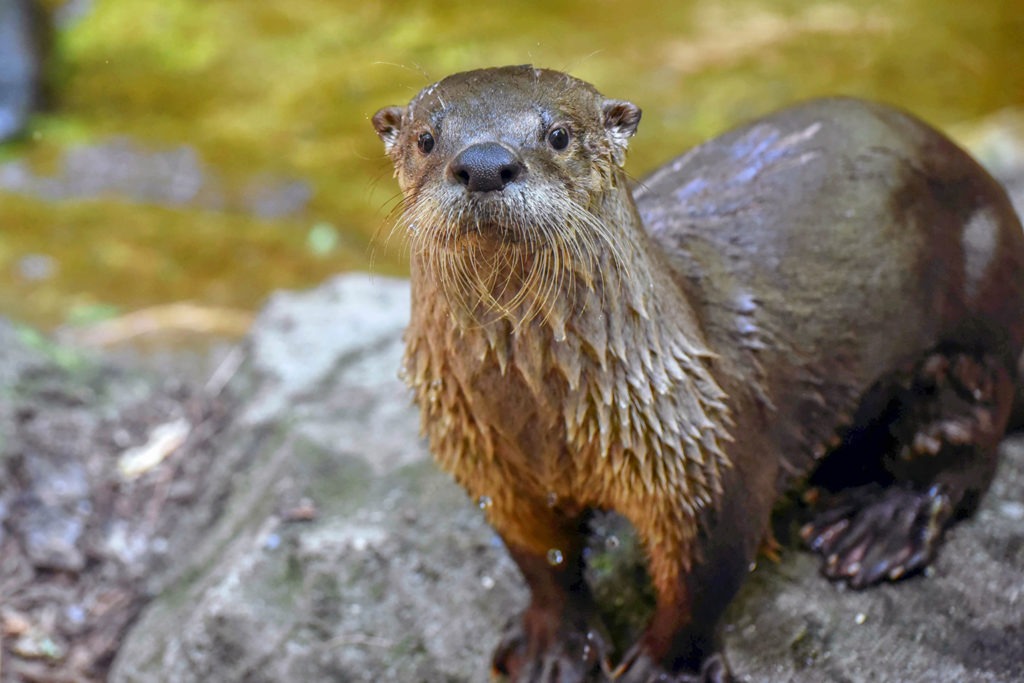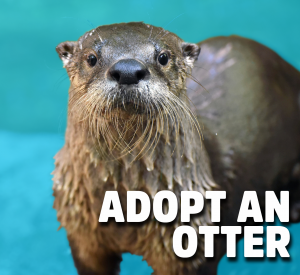Overview
“Where I live”
Although called river otters, their name is somewhat misleading. River otters live in many different kinds of water throughout North America, including rivers, streams, lakes, ponds, wetlands, and coastal shorelines and marshes. Basically, they’ll live wherever they can find food and water to swim in, but they’re sensitive to pollution so they won’t inhabit polluted waterways. In Maryland, river otters live in tidewater areas across the state.
“How I live there”
River otters are made for sliding and gliding through water. They have short legs, muscular and streamlined bodies, small heads and long, powerful tails. They can seal their nostrils shut while underwater and can hold their breath for up to eight minutes! They are acrobatic and agile and love to play. They belly slide in ice and snow, plummet down riverbanks, and dive and roll in the water. They are tons of fun to watch, but otters do not make good pets. They are known to become defensive and aggressive towards humans when raised in captivity, particularly once they reach sexual maturity.
While hunting underwater, with their other senses dulled, otters rely heavily on their long, sensitive whiskers to locate prey. They eat fish, amphibians, crustaceans, crabs, and the occasional small mammal or bird. River otters can swim in very tight circles, creating a whirlpool-like motion that brings fish up from the bottom. This is one way that they catch fish.
River otters usually live alone and are rarely found in pairs or groups. They’ll create simple, single dens by lining an abandoned beaver or muskrat den or a hollow log or stump with leaves and bark. (To get that abandoned den, they’ll sometimes force the original occupants out!) The entrance to an otter den can be either underwater or above ground.
“Making my mark”
When otters are diving and rolling and rubbing against stuff, they’re not just having a good time playing. They’re also spreading their musky scent to mark territory as if to say “this is my property.” They also mark territory with urine.
“What eats me”
Alligators, bobcats, and coyotes all prey on river otters. To successfully catch a river otter, though, you have to be fast and careful. Otters are lightning quick and aren’t afraid to defend themselves with their sharp, powerful claws.
Raising Young
Male and female otters come together briefly in early spring to mate. Because river otters experience delayed implantation (meaning that the fertilized egg does not implant in the uterine wall immediately), a female river otter will be technically pregnant for about a year even though gestation lasts only 5 to 7 weeks. Females give birth to three or four pups at a time. At birth, pups are blind and completely dependent on their mother. She will hide them in a nursery den for up to three months until they are weaned.
Conservation
By the early 20th century, river otters had been driven nearly to extinction by over-trapping, habitat loss, and water pollution. They had disappeared from much of their North American range. However, as habitat conditions have improved over the past several decades and because of the success of several state reintroduction programs, river otters are making a comeback. They are once again abundant in the tidewater areas of Maryland. They are now listed by the IUCN, the world’s leading conservation organization, as a species of least concern.
Taxonomy
- Kingdom: Animalia
- Phylum: Chordata
- Subphylum: Vertebrata
- Class: Mammalia
- Order: Carnivora
- Family: Mustelidae
- Genera: Lontra
- Species: canadensis




